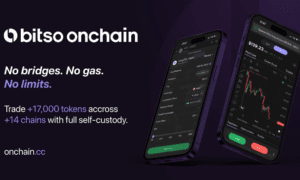Finding your way in sprawling venues like airports, convention centers, malls, or hospitals has always been a challenge. With endless corridors, multiple floors, and numerous destinations, it’s easy for visitors to feel overwhelmed or even lost. Traditional maps and static signboards, while helpful, often fall short in terms of clarity, accessibility, and real-time information.
That’s where touchscreen interfaces have made a significant difference. These interactive tools are reshaping the way people navigate complex environments, offering intuitive, dynamic, and user-friendly solutions to an age-old problem.
Touchscreen wayfinding systems are not just fancy tech installations, they’re practical tools that help thousands of people every day. From reducing foot traffic congestion to improving accessibility for people with disabilities, the impact of these interfaces is both broad and meaningful. Let’s explore how this shift to touchscreen technology is making navigation easier and smarter for everyone involved.
The Growing Demand for Better Navigation Tools
Large venues have grown more complex over the years. With expansion comes the need for improved navigation systems. Airports have multiple terminals, hospitals have various departments across several buildings, and shopping malls seem to sprawl for miles. People want efficiency and simplicity. Whether it’s a first-time visitor or someone who’s simply running late, nobody wants to wander around looking for signage or asking for directions.
Traditional methods like static directories or paper maps, while still present, are proving less efficient. They lack the adaptability and ease of use that touchscreen systems now offer. Visitors expect something more responsive and personalized. That’s exactly what modern wayfinding technology is designed to deliver.
What Makes Touchscreen Interfaces So Effective?
The success of touchscreen wayfinding systems lies in their interactivity. Users can quickly input a destination, receive real-time directions, and even select preferences such as elevators over stairs or the shortest walking route. Some interfaces offer multi-language support, helping non-native speakers feel more confident in unfamiliar settings.
Additionally, touchscreen interfaces often use vivid graphics and 3D representations of the venue. This makes navigation not only easier but also more visually engaging. Directions can include step-by-step animations, visual landmarks, and estimated walking times, helping users feel more oriented from the moment they start.
Real-Time Updates and Dynamic Information
One of the most important benefits of touchscreen systems is their ability to update in real time. In airports, for instance, gate changes or security alerts can be reflected immediately on the display. In hospitals, departments that temporarily move or go under renovation can be updated on the system without needing to print new maps.
This dynamic aspect allows large venues to respond to emergencies, events, and daily changes without disrupting the visitor experience. For example, if a certain hallway is closed, the interface will automatically reroute users, preventing frustration or confusion. It’s an advantage that static signage simply cannot offer.
Enhancing Accessibility for All Users
A critical area where touchscreen interfaces shine is accessibility. These systems are designed with inclusivity in mind. Adjustable screen heights, audio guidance for visually impaired users, and language options ensure that a wide range of visitors can interact with the technology comfortably.
For individuals who use wheelchairs, touchscreen stations placed at accessible heights with clear, large-print instructions make a world of difference. Likewise, audio cues and tactile feedback can aid those with limited vision or hearing. These inclusive design features reflect an ongoing commitment to make public spaces navigable for everyone.
Reducing Staff Workload and Improving Efficiency
Another practical advantage of touchscreen interfaces is that they significantly reduce the need for staff to provide directions. In high-traffic venues like convention centers or stadiums, staff are often overwhelmed by constant questions about how to find a particular room, gate, or booth. While it’s still important to have personnel on-site for support, the number of inquiries can be greatly reduced when visitors can help themselves using an intuitive, digital directory.
This frees up staff to focus on more critical tasks and improves overall venue management. Visitors are empowered to take control of their journey, resulting in smoother flow and reduced bottlenecks in busy areas.
Customization for Specific Venues
One size doesn’t fit all, especially when it comes to public spaces. The flexibility of touchscreen wayfinding systems allows venues to customize their layout, branding, and functionality to match specific needs. A hospital may prioritize patient destinations like imaging, lab work, or specific physicians, while a mall may focus on retail stores, promotions, and parking levels.
Some directories even allow for advertising space, giving venues an added stream of revenue. More advanced systems may integrate with mobile apps or send directions directly to a user’s phone via QR codes or Bluetooth. This level of customization not only enhances user experience but also supports the venue’s broader goals and infrastructure.
If you’re looking to implement a reliable, user-friendly touchscreen directory system, you can easily order through the DDE. Their platform supports a variety of venue types and is known for seamless integration with existing layouts.
The Role of Touchscreens in Emergency Situations
Emergency preparedness is another area where touchscreen wayfinding systems play a vital role. During a crisis, such as a fire or evacuation, touchscreen systems can provide immediate instructions on the safest exit routes. Unlike static signs that may be ignored or unclear in a panic, digital displays can flash warnings, play instructional videos, or even provide interactive evacuation maps.
In venues like hospitals or airports, where panic can spread quickly, this real-time functionality can help save lives. Staff can update instructions based on evolving conditions, and the system can guide people safely and efficiently out of harm’s way.
Integration with Other Digital Tools
Modern touchscreen directories are not isolated systems. Many integrate with broader digital infrastructure, including mobile apps, security systems, and customer service kiosks. A traveler may use the airport’s app to plan their journey, then interact with a touchscreen interface to adjust plans in real time based on flight changes. Or a hospital patient might check in via a digital kiosk, then be directed to their next appointment through an adjacent interactive map.
These integrations create a seamless digital experience across touchpoints, giving users continuity and confidence in their navigation.
Looking Ahead: The Future of Digital Wayfinding
As technology continues to evolve, touchscreen interfaces are becoming even more sophisticated. Some now include voice recognition, facial recognition, or AI-driven personalization. Imagine a system that knows your preferences, adjusts for your physical needs, and can even offer alternative routes when it senses congestion ahead.
The future of wayfinding isn’t just about getting from point A to point B. It’s about creating a guided, informed, and stress-free journey in increasingly complex environments. And touchscreen interfaces are leading that transformation.
Final Thoughts
Navigating large venues no longer needs to be a confusing or frustrating experience. Touchscreen wayfinding systems have transformed the landscape of public navigation by offering intelligent, inclusive, and dynamic solutions. From accessibility to emergency response, from real-time updates to personalization, these systems are setting new standards in how we move through shared spaces.
Their impact goes beyond convenience, it improves safety, efficiency, and the overall visitor experience. As more venues adopt this technology, we can expect smarter, more user-centered environments that are easier for everyone to understand and enjoy.































